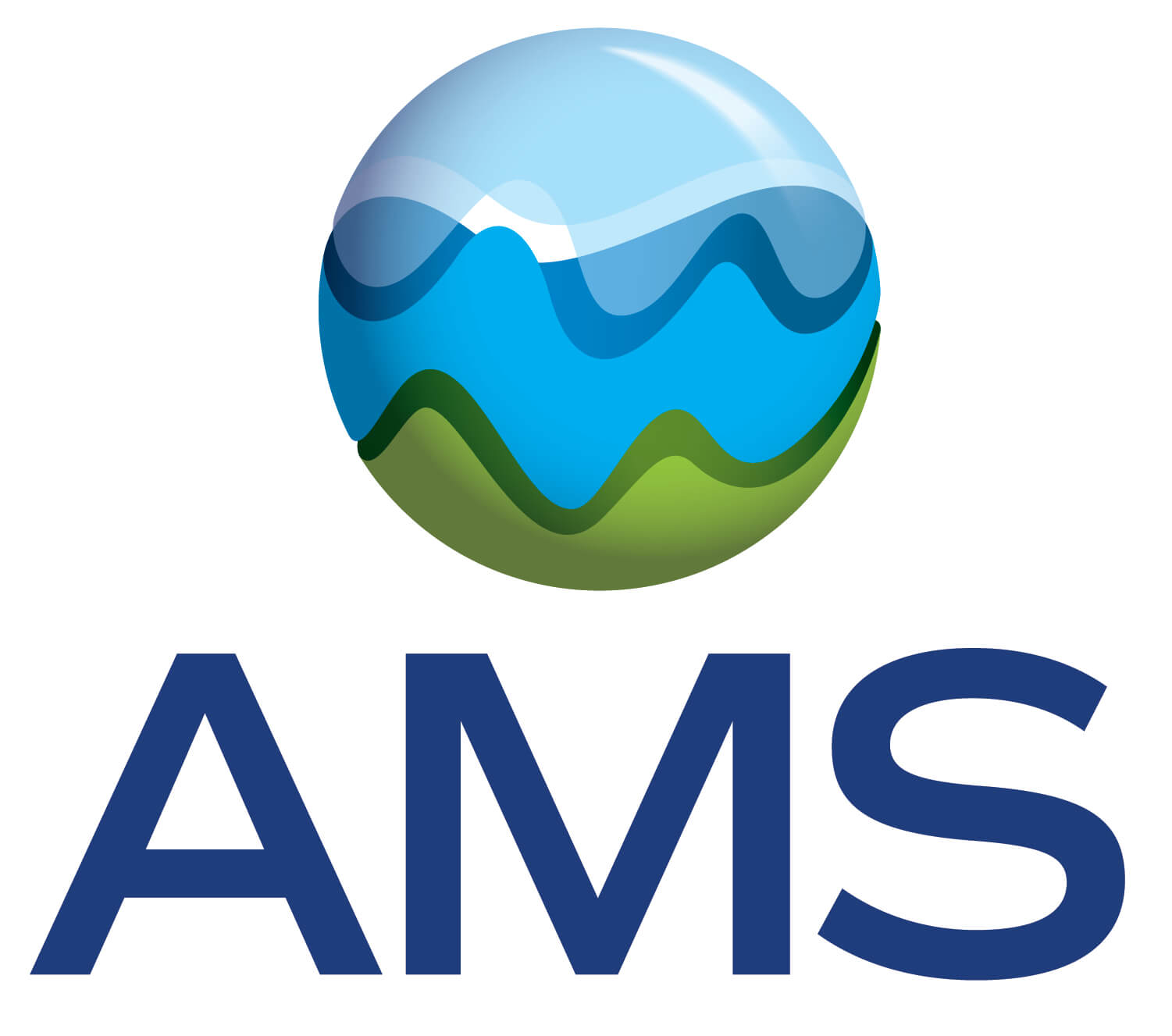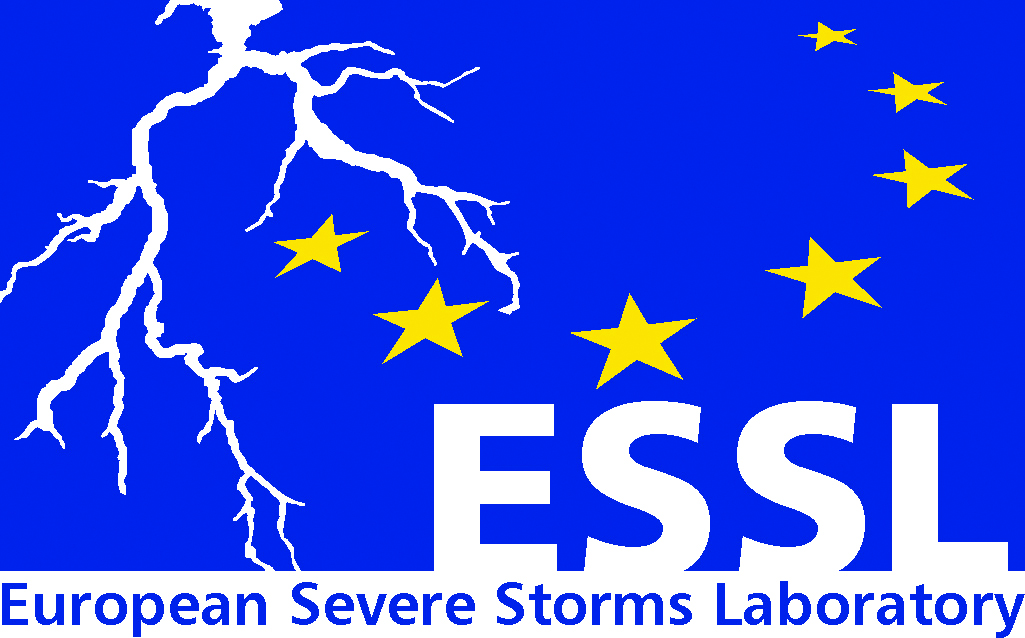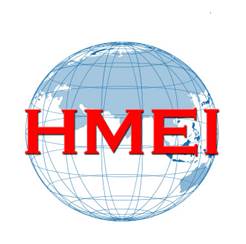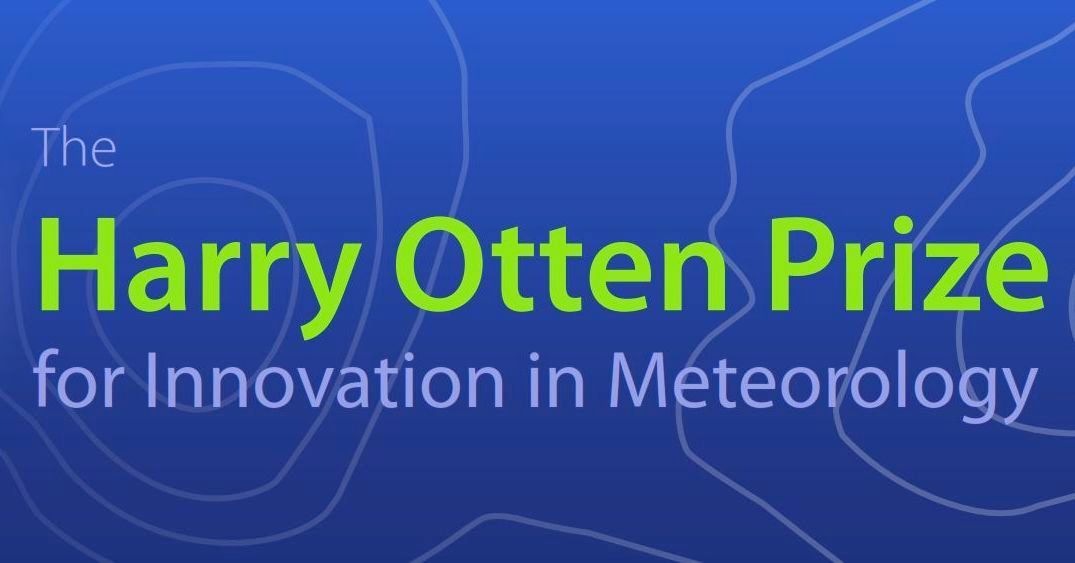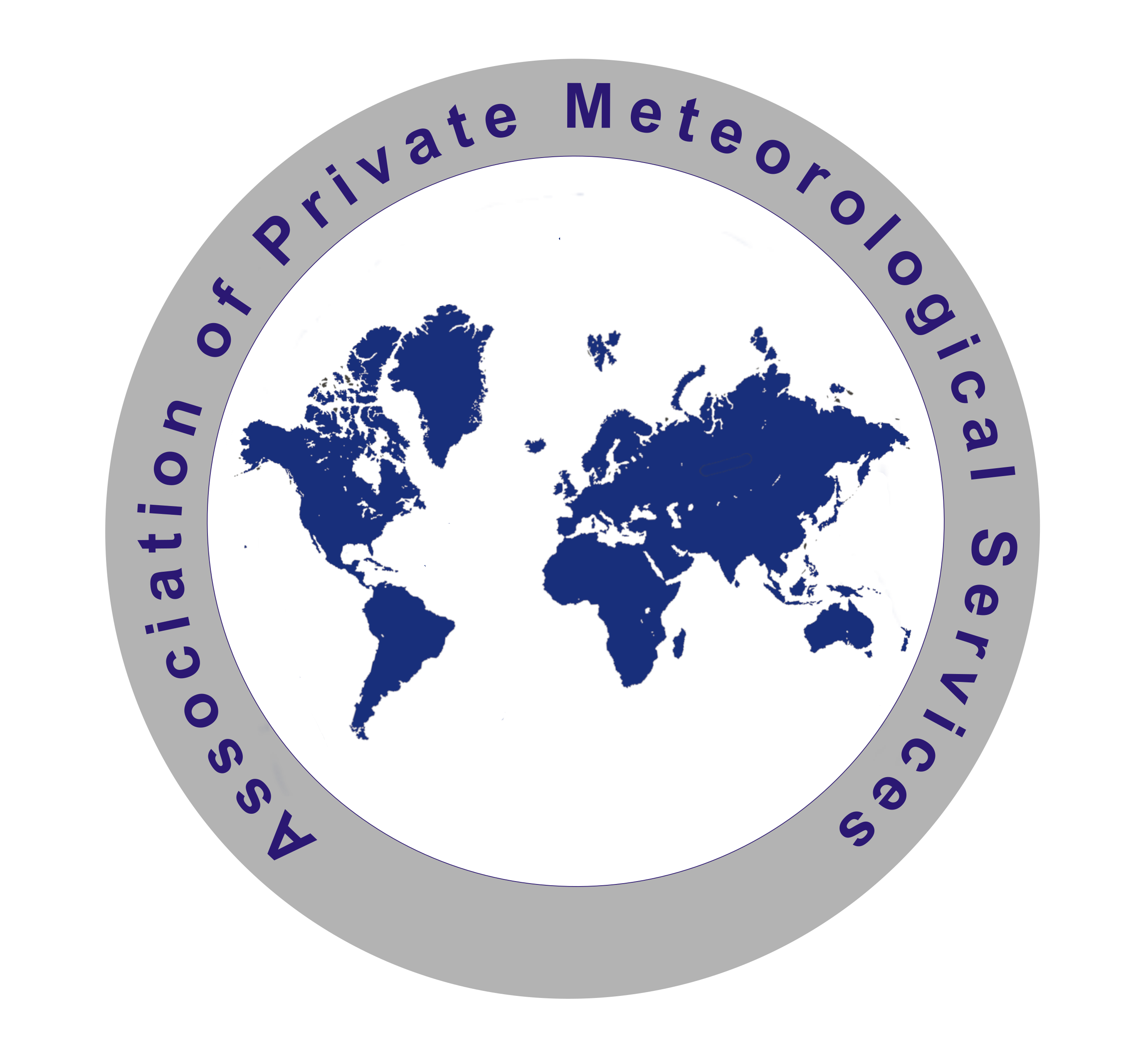ES1 – Bringing benefits to society
ES1.1 | Public-Academic-Private Collaboration to Support Climate Neutrality Goals
EMS2024-347 | Posters | ES1.1 | OPA: evaluations required
Climate Transition Risks for Lithuania’s EconomyTue, 03 Sep, 18:00–19:30 (CEST) | Poster area 'Vestíbul' | VB1
ES1.3 | Weather and climate risks and associated impacts to society
EMS2024-222 | Posters | ES1.3 | OPA: evaluations required
Estimation of Distribution of Indoor and Outdoor Population Using Location-Based Serviced DataThu, 05 Sep, 18:00–19:30 (CEST) | Poster area 'Vestíbul' | VB1
EMS2024-293 | Posters | ES1.3 | OPA: evaluations required
The impacts of energy burden and social vulnerability in Taiwan under climate change and urban heat islandThu, 05 Sep, 18:00–19:30 (CEST) | Poster area 'Vestíbul' | VB2
EMS2024-557 | Posters | ES1.3 | OPA: evaluations required
Evaluating the role of time lag between climate extremes and socioeconomic impactsThu, 05 Sep, 18:00–19:30 (CEST) | Poster area 'Vestíbul' | VB5
EMS2024-939 | Posters | ES1.3 | OPA: evaluations required
Climate Change and Aviation: The Increasing Impact of Heatwaves on European AirportsThu, 05 Sep, 18:00–19:30 (CEST) | Poster area 'Vestíbul' | VB11
EMS2024-941 | Posters | ES1.3 | OPA: evaluations required
Multi-sensor approach for analysis of extreme weather events affecting areas of cultural interestThu, 05 Sep, 18:00–19:30 (CEST) | Poster area 'Vestíbul' | VB12
ES1.4 | National and international climate services: user engagement and governance
EMS2024-234 | Posters | ES1.4
Enhancing meteorological report access and response time: How the Meteorological Service of Catalonia addresses the rise in weather-related claimsTue, 03 Sep, 18:00–19:30 (CEST) | Poster area 'Vestíbul' | VB8
EMS2024-266 | Posters | ES1.4 | OPA: evaluations required
ECOAZUL-MED climate service tool: supporting aquaculture, fisheries and coastal tourism in the Spanish Mediterranean coastsTue, 03 Sep, 18:00–19:30 (CEST) | Poster area 'Vestíbul' | VB12
EMS2024-523 | Posters | ES1.4 | OPA: evaluations required
Driving Change: User Engagement and Governance in Climate Adaptation for Coastal DestinationsTue, 03 Sep, 18:00–19:30 (CEST) | Poster area 'Vestíbul' | VB13
EMS2024-692 | Posters | ES1.4 | OPA: evaluations required
Actionable Climate Information to take decisions: Firts insights of the co-created climate indices for cultural outdoor activities in CataloniaTue, 03 Sep, 18:00–19:30 (CEST) | Poster area 'Vestíbul' | VB10
ES1.6 | Open Data - data, application development, impact
EMS2024-949 | Posters | ES1.6 | OPA: evaluations required
Novel 3-D and AI-based weather forecast products based on open dataThu, 05 Sep, 18:00–19:30 (CEST) | Poster area 'Vestíbul' | VB16
ES2 – Communication with and within society
ES2.1 | Communication and media
EMS2024-330 | Posters | ES2.1 | OPA: evaluations required
Informing about climate change evidence to society: the Annual Bulletin of Climate Indicators in Catalonia (Meteorological Service of Catalonia)Wed, 04 Sep, 18:00–19:30 (CEST) | Poster area 'Vestíbul' | VB2
OSA1 – Operational systems
OSA1.1 | Forecasting, nowcasting and warning systems
EMS2024-474 | Posters | OSA1.1 | OPA: evaluations required
Reanalysis of Giant Hail Event in Catalonia (NE of the Iberian Peninsula)Wed, 04 Sep, 18:00–19:30 (CEST) | Poster area 'Galaria Paranimf' | GP6
EMS2024-978 | Posters | OSA1.1 | OPA: evaluations required
New visualization and analysis tools for 3D Lightning Mapping Array dataWed, 04 Sep, 18:00–19:30 (CEST) | Poster area 'Galaria Paranimf' | GP12
OSA1.2 | Warning value chains and early warning systems
EMS2024-327 | Posters | OSA1.2
Understanding reference evapotranspiration distribution and evolution in the Northwestern Mediterranean basinWed, 04 Sep, 18:00–19:30 (CEST) | Poster area 'Galaria Paranimf' | GP14
OSA1.4 | Data Assimilation and Ensemble Forecasting (short, medium, extended range): traditional versus machine learning
EMS2024-304 | Posters | OSA1.4 | OPA: evaluations required
Multi-model Ensemble Prediction of Summer Precipitation in China Based on Machine Learning AlgorithmsTue, 03 Sep, 18:00–19:30 (CEST) | Poster area 'Galaria Paranimf' | GP3
EMS2024-307 | Posters | OSA1.4 | OPA: evaluations required
Introduction of operational convection permitting ensemble prediction system of North ChinaTue, 03 Sep, 18:00–19:30 (CEST) | Poster area 'Galaria Paranimf' | GP4
EMS2024-390 | Posters | OSA1.4 | OPA: evaluations required
Diagnostic study of the forecast accuracy of the ensemble models at the recurvature point of the typhoonTue, 03 Sep, 18:00–19:30 (CEST) | Poster area 'Galaria Paranimf' | GP5
EMS2024-530 | Posters | OSA1.4 | OPA: evaluations required
Exploring outer-loop land-atmosphere couplingTue, 03 Sep, 18:00–19:30 (CEST) | Poster area 'Galaria Paranimf' | GP1
OSA1.5 | The Weather Research and Forecasting Model (WRF): development, research and applications
EMS2024-25 | Posters | OSA1.5 | OPA: evaluations required | EMS Young Scientist Conference Award Lecture
Investigating the Diurnal Cycle of Summer Precipitation over Mainland Southeast Asia: Insights from Dynamic downscaling SimulationsThu, 05 Sep, 18:00–19:30 (CEST) | Poster area 'Galaria Paranimf' | GP8
EMS2024-566 | Posters | OSA1.5 | OPA: evaluations required
Operational weather forecasting in Antarctica with the WRF model in sub-kilometer resolutionThu, 05 Sep, 18:00–19:30 (CEST) | Poster area 'Galaria Paranimf' | GP5
EMS2024-981 | Posters | OSA1.5 | OPA: evaluations required
Analysis of Predictability Improvement due to the Enhancement of Observation Error for the GK-2A Infrared Channels in Data AssimilationThu, 05 Sep, 18:00–19:30 (CEST) | Poster area 'Galaria Paranimf' | GP2
OSA1.6 | Challenges in Weather and Climate Modelling: from model development via verification to operational perspectives
EMS2024-618 | Posters | OSA1.6 | OPA: evaluations required
Analysis of the Fraction Skill Score for the rainfall verification of high resolution model in KMAThu, 05 Sep, 18:00–19:30 (CEST) | Poster area 'Galaria Paranimf' | GP12
OSA1.7 | Machine Learning in Weather and Climate
EMS2024-180 | Posters | OSA1.7 | OPA: evaluations required
The application of AI tools in weather and climate scienceTue, 03 Sep, 18:00–19:30 (CEST) | Poster area 'Galaria Paranimf' | GP7
EMS2024-322 | Posters | OSA1.7 | OPA: evaluations required
Postprocessing multi-model ensemble temperature forecasts using Distributional Regression NetworksTue, 03 Sep, 18:00–19:30 (CEST) | Poster area 'Galaria Paranimf' | GP9
EMS2024-491 | Posters | OSA1.7 | OPA: evaluations required
Comparing Deep Learning methodologies for Downscaling between meteorological modelsTue, 03 Sep, 18:00–19:30 (CEST) | Poster area 'Galaria Paranimf' | GP10
EMS2024-536 | Posters | OSA1.7 | OPA: evaluations required
AI-based approach for short-term forecasting of wind speed from a weather station network: A Case study in ValenciaTue, 03 Sep, 18:00–19:30 (CEST) | Poster area 'Galaria Paranimf' | GP12
EMS2024-669 | Posters | OSA1.7 | OPA: evaluations required
Monitoring ground level nitrogen dioxide concentration in complex terrain areas using satellite Sentinel 5P total column observationsTue, 03 Sep, 18:00–19:30 (CEST) | Poster area 'Galaria Paranimf' | GP13
EMS2024-878 | Posters | OSA1.7 | OPA: evaluations required
Leveraging Deep-Learning Approaches with Spatial Context for Enhanced Surface Solar Irradiance Estimation from Third-Generation Geostationary Satellite ImageryTue, 03 Sep, 18:00–19:30 (CEST) | Poster area 'Galaria Paranimf' | GP14
OSA2 – Applications of meteorology
OSA2.1 | Energy meteorology
EMS2024-441 | Posters | OSA2.1 | OPA: evaluations required
CMIP6 climate projections based wave energy production analysis for Mutriku Wave Energy Plant in the XXI centuryThu, 05 Sep, 18:00–19:30 (CEST) | Poster area 'Galaria Paranimf' | GP22
OSA2.2 | Agricultural and Forest Meteorology
EMS2024-46 | Posters | OSA2.2 | OPA: evaluations required
Identification and Risk Characteristics of Agricultural Drought Disaster Events Based on the Copula Function in Northeast ChinaWed, 04 Sep, 18:00–19:30 (CEST) | Poster area 'Galaria Paranimf' | GP16
EMS2024-138 | Posters | OSA2.2 | OPA: evaluations required
Towards Resilient Viticulture: Vineyard Microclimatic Zoning as a Tool for Sustainable AdaptationWed, 04 Sep, 18:00–19:30 (CEST) | Poster area 'Galaria Paranimf' | GP19
EMS2024-282 | Posters | OSA2.2
Ten years monitoring crops with citizen scienceWed, 04 Sep, 18:00–19:30 (CEST) | Poster area 'Galaria Paranimf' | GP21
EMS2024-748 | Posters | OSA2.2 | OPA: evaluations required
A comparison of remote sensing evapotranspiration products over agriculture cropsWed, 04 Sep, 18:00–19:30 (CEST) | Poster area 'Galaria Paranimf' | GP22
EMS2024-795 | Posters | OSA2.2 | OPA: evaluations required
Frost safety margins: a proposal based on daily minimum temperatureWed, 04 Sep, 18:00–19:30 (CEST) | Poster area 'Galaria Paranimf' | GP23
EMS2024-951 | Posters | OSA2.2 | OPA: evaluations required
Satellite-based springtime phenology of silver birch (Betula pendula) in Poland and its relations to air temperatureWed, 04 Sep, 18:00–19:30 (CEST) | Poster area 'Galaria Paranimf' | GP25
OSA2.5 | Human biometeorology
EMS2024-297 | Posters | OSA2.5 | OPA: evaluations required
Assessing the exposure of diverse populations to heat under a thermo-physiologically consistent approach in a large Mediterranean urban areaTue, 03 Sep, 18:00–19:30 (CEST) | Poster area 'Galaria Paranimf' | GP21
EMS2024-469 | Posters | OSA2.5 | OPA: evaluations required
Analysis of tourists' perceptions regarding the weather influence in Cantabria based on TripAdvisor reviewsTue, 03 Sep, 18:00–19:30 (CEST) | Poster area 'Galaria Paranimf' | GP23
EMS2024-793 | Posters | OSA2.5 | OPA: evaluations required
Socioeconomic and Environmental Determinants of Heat Vulnerability in Prague, CzechiaTue, 03 Sep, 18:00–19:30 (CEST) | Poster area 'Galaria Paranimf' | GP26
OSA3 – Applications of climate research
OSA3.2 | Climate monitoring: data rescue, management, quality and homogenization
EMS2024-305 | Posters | OSA3.2 | OPA: evaluations required
20 years of data rescue initiatives at the Meteorological Service of CataloniaThu, 05 Sep, 18:00–19:30 (CEST) | Poster area 'Galaria Paranimf' | GP36
EMS2024-331 | Posters | OSA3.2 | OPA: evaluations required
The Copernicus Climate Change Service’s data rescue and surface meterological data collection effortThu, 05 Sep, 18:00–19:30 (CEST) | Poster area 'Galaria Paranimf' | GP37
EMS2024-340 | Posters | OSA3.2 | OPA: evaluations required
Homogenisation and interpolation of subdaily bright sunshine duration time series in SloveniaThu, 05 Sep, 18:00–19:30 (CEST) | Poster area 'Galaria Paranimf' | GP38
EMS2024-768 | Posters | OSA3.2 | OPA: evaluations required
The role of gap-filling observational data in air quality data-fusion methods: a case study with CALIOPEThu, 05 Sep, 18:00–19:30 (CEST) | Poster area 'Galaria Paranimf' | GP41
OSA3.3 | Spatial climatology
EMS2024-411 | Posters | OSA3.3 | OPA: evaluations required
Reconstruction of long-term consistent air temperature grids for Austria back to 1781Thu, 05 Sep, 18:00–19:30 (CEST) | Poster area 'Galaria Paranimf' | GP52
EMS2024-421 | Posters | OSA3.3 | OPA: evaluations required
Enhancing precision in short-term precipitation interpolation with radar background: unraveling case studies through 10-minute radar data analysisThu, 05 Sep, 18:00–19:30 (CEST) | Poster area 'Galaria Paranimf' | GP47
EMS2024-455 | Posters | OSA3.3 | OPA: evaluations required
High-resolution (250x250m) gridded daily mean wind speed dataset for Austria spanning from 1961 to 2023.Thu, 05 Sep, 18:00–19:30 (CEST) | Poster area 'Galaria Paranimf' | GP51
EMS2024-745 | Posters | OSA3.3 | OPA: evaluations required
Climate Atlas of extremes in Catalonia (1991-2020)Thu, 05 Sep, 18:00–19:30 (CEST) | Poster area 'Galaria Paranimf' | GP49
OSA3.4 | New indicators of climate change
EMS2024-429 | Posters | OSA3.4 | OPA: evaluations required
Characterizing snow seasons through the application of a new Multivariate Snow IndexTue, 03 Sep, 18:00–19:30 (CEST) | Poster area 'Galaria Paranimf' | GP28
OSA3.5 | Deriving actionable information from climate data
EMS2024-1014 | Posters | OSA3.5 | OPA: evaluations required
ClimRisk.eu – new climate proofing tool for Central EuropeTue, 03 Sep, 18:00–19:30 (CEST) | Poster area 'Galaria Paranimf' | GP31
OSA3.6 | Forecasting on sub-seasonal to seasonal to decadal timescales
EMS2024-28 | Posters | OSA3.6 | OPA: evaluations required
Ensemble forecast of extreme precipitation in Europe by combining a stochastic weather generator with dynamical modelsTue, 03 Sep, 18:00–19:30 (CEST) | Poster area 'Galaria Paranimf' | GP38
EMS2024-158 | Posters | OSA3.6 | OPA: evaluations required
Global Streamflow Seasonal Forecast by a novel two-way AOGCM/Land/River couplingTue, 03 Sep, 18:00–19:30 (CEST) | Poster area 'Galaria Paranimf' | GP39
EMS2024-162 | Posters | OSA3.6 | OPA: evaluations required
Skillful Extended-Range Forecasts of Standardized Precipitation Indices for Drought Early Warning in SwitzerlandTue, 03 Sep, 18:00–19:30 (CEST) | Poster area 'Galaria Paranimf' | GP36
EMS2024-1101 | Posters | OSA3.6 | OPA: evaluations required
Subsampling members in a seasonal forecast ensembleTue, 03 Sep, 18:00–19:30 (CEST) | Poster area 'Galaria Paranimf' | GP41
UP1 – Atmospheric processes and severe weather
UP1.1 | Atmospheric and Climate dynamics, predictability, and extremes
EMS2024-21 | Posters | UP1.1 | EMS Young Scientist Conference Award Lecture
Impacts of the changing summer thermal land-sea contrast on the northern hemisphere planetary circulationWed, 04 Sep, 18:00–19:30 (CEST) | Poster area 'Vestíbul' | VB7
EMS2024-39 | Posters | UP1.1 | OPA: evaluations required
Reasons for Different Predictability of Tropical Cyclone Tracks in the Western North Pacific and Atlantic OceansWed, 04 Sep, 18:00–19:30 (CEST) | Poster area 'Vestíbul' | VB14
EMS2024-88 | Posters | UP1.1 | OPA: evaluations required
Precipitation extremes in Ukraine from 1979 to 2019: Climatology, large-scale flow conditions, and moisture sourcesTue, 03 Sep, 18:00–19:30 (CEST) | Poster area 'Vestíbul' | VB27
EMS2024-118 | Posters | UP1.1 | OPA: evaluations required
Opposite spectral properties of Rossby waves during weak and strong stratospheric polar vortex eventsWed, 04 Sep, 18:00–19:30 (CEST) | Poster area 'Vestíbul' | VB4
EMS2024-209 | Posters | UP1.1 | OPA: evaluations required
The Future Responses of Tropical Extreme Convection to Climate Change based on GCRM simulationWed, 04 Sep, 18:00–19:30 (CEST) | Poster area 'Vestíbul' | VB11
EMS2024-289 | Posters | UP1.1 | OPA: evaluations required
Influence of the previous North Atlantic Oscillation (NAO) on the spring dust aerosols over North ChinaTue, 03 Sep, 18:00–19:30 (CEST) | Poster area 'Vestíbul' | VB31
EMS2024-408 | Posters | UP1.1 | OPA: evaluations required
The predictability of temperature related mortality in the summers of 2022 and 2023Tue, 03 Sep, 18:00–19:30 (CEST) | Poster area 'Vestíbul' | VB20
EMS2024-538 | Posters | UP1.1 | OPA: evaluations required
Identify Patterns of Flash Heavy Rainfall in Limited Area by FConvNeXtTue, 03 Sep, 18:00–19:30 (CEST) | Poster area 'Vestíbul' | VB23
EMS2024-634 | Posters | UP1.1 | OPA: evaluations required
The Role of Latent Heating in a North-Atlantic Baroclinic Environment Conducive to Extratropical Cyclone ClusteringWed, 04 Sep, 18:00–19:30 (CEST) | Poster area 'Vestíbul' | VB12
UP1.2 | Atmospheric boundary-layer processes, turbulence and land-atmosphere interactions
EMS2024-132 | Posters | UP1.2 | OPA: evaluations required
How do the small-scale details of the radiative transfer shape the development of stratocumulus?Wed, 04 Sep, 18:00–19:30 (CEST) | Poster area 'Vestíbul' | VB16
EMS2024-215 | Posters | UP1.2 | OPA: evaluations required
Interpretable machine learning reveals the drivers of turbulence anisotropy over complex terrain.Wed, 04 Sep, 18:00–19:30 (CEST) | Poster area 'Vestíbul' | VB17
EMS2024-245 | Posters | UP1.2 | OPA: evaluations required
How should the anthropogenic heat be treated in the urban surface energy balance: revisit of the definition of QFWed, 04 Sep, 18:00–19:30 (CEST) | Poster area 'Vestíbul' | VB19
UP1.3 | Understanding and modelling of atmospheric hazards and severe weather phenomena
EMS2024-36 | Posters | UP1.3 | OPA: evaluations required
Analysis of Triggering Mechanisms for Localized Nocturnal Convection Over a Complex Mountainous Region in South China and Sources of Forecast Errors in the Convection-Permitting ModelThu, 05 Sep, 18:00–19:30 (CEST) | Poster area 'Vestíbul' | VB36
EMS2024-85 | Posters | UP1.3 | OPA: evaluations required
Severe thunderstorm climatology in the Balearic Islands (2010-2023)Thu, 05 Sep, 18:00–19:30 (CEST) | Poster area 'Vestíbul' | VB19
EMS2024-216 | Posters | UP1.3 | OPA: evaluations required
Hot or Boom? The Influence of Atmospheric Deserts on Heat Wave and Thunderstorm FormationThu, 05 Sep, 18:00–19:30 (CEST) | Poster area 'Vestíbul' | VB23
EMS2024-350 | Posters | UP1.3 | OPA: evaluations required
Mitigating hailstorm impacts: an integrated approach using Machine Learning and physical simulationsThu, 05 Sep, 18:00–19:30 (CEST) | Poster area 'Vestíbul' | VB27
EMS2024-544 | Posters | UP1.3 | OPA: evaluations required
Characterizing hail-prone environments using convection-permitting reanalysis and overshooting top detections over south-central EuropeThu, 05 Sep, 18:00–19:30 (CEST) | Poster area 'Vestíbul' | VB29
EMS2024-593 | Posters | UP1.3 | OPA: evaluations required
ECMWF lightning forecasts evaluation during fire seasons in PortugalThu, 05 Sep, 18:00–19:30 (CEST) | Poster area 'Vestíbul' | VB30
EMS2024-599 | Posters | UP1.3 | OPA: evaluations required
Revisiting a 24-year database of tornado damage paths using the new International Fujita (IF) scaleThu, 05 Sep, 18:00–19:30 (CEST) | Poster area 'Vestíbul' | VB31
EMS2024-694 | Posters | UP1.3 | OPA: evaluations required
Large-scale Influences on Tropical Cyclone Activities in a Superparameterized GCM Aquaplanet ExperimentThu, 05 Sep, 18:00–19:30 (CEST) | Poster area 'Vestíbul' | VB32
EMS2024-716 | Posters | UP1.3 | OPA: evaluations required
Compound precipitation and wind extremes in the eastern part of the Baltic Sea regionThu, 05 Sep, 18:00–19:30 (CEST) | Poster area 'Vestíbul' | VB34
EMS2024-1054 | Posters | UP1.3 | OPA: evaluations required
Impact of soil moisture on the heavy precipitation during the July 2021 floodThu, 05 Sep, 18:00–19:30 (CEST) | Poster area 'Vestíbul' | VB35
UP1.4 | High-resolution precipitation monitoring and statistical analysis for hydrological and climate-related applications
EMS2024-1027 | Posters | UP1.4 | OPA: evaluations required
Design areal precipitation in Czech catchments – radar data usage instead of station data reductionWed, 04 Sep, 18:00–19:30 (CEST) | Poster area 'Vestíbul' | VB32
UP1.5 | Atmospheric measurements: Instruments, experiments, networks and long-term programs using in-situ and remote sensing techniques
EMS2024-375 | Posters | UP1.5 | OPA: evaluations required
Sea surface wind measurement enhanced by stepped frequency microwave radiometer: A comprehensive approach to validation and sensitivity analysisTue, 03 Sep, 18:00–19:30 (CEST) | Poster area 'Vestíbul' | VB41
EMS2024-511 | Posters | UP1.5 | OPA: evaluations required
In-situ measurements of Saharan dust concentrations and charge over Cyprus with an uncrewed aircraft systemTue, 03 Sep, 18:00–19:30 (CEST) | Poster area 'Vestíbul' | VB34
UP2 – Interactions within the Earth System
UP2.1 | Cities and urban areas in the earth-atmosphere system
EMS2024-97 | Posters | UP2.1 | OPA: evaluations required
Attributing urban evapotranspiration from eddy-covariance to surface cover: bottom-up versus top-downWed, 04 Sep, 18:00–19:30 (CEST) | Poster area 'Vestíbul' | VB49
EMS2024-130 | Posters | UP2.1 | OPA: evaluations required
Urban effects on heatwave intensity and duration: a case study of the Vilnius cityWed, 04 Sep, 18:00–19:30 (CEST) | Poster area 'Vestíbul' | VB37
EMS2024-244 | Posters | UP2.1 | OPA: evaluations required
Analysis of the role of Saharan Dust Intrusions in PM10 precipitation scavenging in the NW Mediterranean RegionWed, 04 Sep, 18:00–19:30 (CEST) | Poster area 'Vestíbul' | VB38
EMS2024-316 | Posters | UP2.1 | OPA: evaluations required
ILS+Urban: an offline land-surface process model for global urban climate and building energy simulationsWed, 04 Sep, 18:00–19:30 (CEST) | Poster area 'Vestíbul' | VB52
EMS2024-488 | Posters | UP2.1 | OPA: evaluations required
“Weather forecasting” of indoor air temperatures in Amsterdam (The Netherlands) to facilitate early heat warnings.Wed, 04 Sep, 18:00–19:30 (CEST) | Poster area 'Vestíbul' | VB55
EMS2024-533 | Posters | UP2.1 | OPA: evaluations required
Exploring Urban Climate Seasonal Dynamics over Cyprus with WRF Model: Implications of Urban ParameterizationsWed, 04 Sep, 18:00–19:30 (CEST) | Poster area 'Vestíbul' | VB57
EMS2024-710 | Posters | UP2.1 | OPA: evaluations required
Assessment of the horizontal resolution and an emission inventory in two different regional climate models in the FOCI projectWed, 04 Sep, 18:00–19:30 (CEST) | Poster area 'Vestíbul' | VB42
EMS2024-763 | Posters | UP2.1 | OPA: evaluations required
Sensitivity analysis in pollution dispersion within street canyonsWed, 04 Sep, 18:00–19:30 (CEST) | Poster area 'Vestíbul' | VB43
EMS2024-767 | Posters | UP2.1 | OPA: evaluations required
Characterization of outdoor-indoor air pollution at a city-wide scale in Barcelona using a high-resolution urban air quality modelWed, 04 Sep, 18:00–19:30 (CEST) | Poster area 'Vestíbul' | VB45
EMS2024-814 | Posters | UP2.1 | OPA: evaluations required
Spatial modeling of Zaragoza urban temperature at seasonal scale, 2015-2022.Wed, 04 Sep, 18:00–19:30 (CEST) | Poster area 'Vestíbul' | VB36
EMS2024-942 | Posters | UP2.1 | OPA: evaluations required
Indoor and outdoor air quality relationships modellingWed, 04 Sep, 18:00–19:30 (CEST) | Poster area 'Vestíbul' | VB44
EMS2024-943 | Posters | UP2.1 | OPA: evaluations required
A deep learning approach for PM2.5 exceedances forecasting in an urban areaWed, 04 Sep, 18:00–19:30 (CEST) | Poster area 'Vestíbul' | VB46
UP2.2 | Exploring the interfaces between meteorology and hydrology
EMS2024-214 | Posters | UP2.2 | OPA: evaluations required
Classification of convective episodes in different climatic zonesThu, 05 Sep, 18:00–19:30 (CEST) | Poster area 'Vestíbul' | VB38
EMS2024-260 | Posters | UP2.2 | OPA: evaluations required
Integrating the ParFlow hydrological model into ICONThu, 05 Sep, 18:00–19:30 (CEST) | Poster area 'Vestíbul' | VB39
EMS2024-1058 | Posters | UP2.2 | OPA: evaluations required
Impact of Spatial Extension of Irrigation in the ICON-nwp ModelThu, 05 Sep, 18:00–19:30 (CEST) | Poster area 'Vestíbul' | VB43
UP2.3 | Radiation, clouds and aerosols: From observations to modelling to verification
EMS2024-944 | Posters | UP2.3 | OPA: evaluations required
Solar radiation modeling under 3D reconstructed cloud fieldsWed, 04 Sep, 18:00–19:30 (CEST) | Poster area 'Vestíbul' | VB62
UP2.4 | Atmosphere-Ocean interactions: open-ocean and coastal processes
EMS2024-142 | Posters | UP2.4 | OPA: evaluations required
Influence of physical drivers on the variability of shoreline position in western South AmericaThu, 05 Sep, 18:00–19:30 (CEST) | Poster area 'Vestíbul' | VB54
EMS2024-165 | Posters | UP2.4 | OPA: evaluations required
Ocean-wave-atmosphere-coupling in the AROBASE modelling system for coastal wave warning and sensitivity to momentum flux parametrisationThu, 05 Sep, 18:00–19:30 (CEST) | Poster area 'Vestíbul' | VB45
EMS2024-462 | Posters | UP2.4 | OPA: evaluations required
Advancing Understanding of the Sea Breeze for the Romanian Black Sea Coast: A Comparative Analysis Using the SBI IndexThu, 05 Sep, 18:00–19:30 (CEST) | Poster area 'Vestíbul' | VB56
EMS2024-684 | Posters | UP2.4 | OPA: evaluations required
Gulf Stream Ocean Conditions Influence on Atmospheric RiversThu, 05 Sep, 18:00–19:30 (CEST) | Poster area 'Vestíbul' | VB49
EMS2024-881 | Posters | UP2.4 | OPA: evaluations required
Atmospheric and ocean preconditioning factors of dense shelf water cascading in the NW Mediterranean: insights from reanalysesThu, 05 Sep, 18:00–19:30 (CEST) | Poster area 'Vestíbul' | VB53
EMS2024-1012 | Posters | UP2.4 | OPA: evaluations required
Characterization of extreme wave fields during Mediterranean tropical-like cyclonesThu, 05 Sep, 18:00–19:30 (CEST) | Poster area 'Vestíbul' | VB51
UP2.5 | Deposition processes and emission dynamics of atmospheric compounds in changing climates: measuring, modeling, predictions
EMS2024-1077 | Posters | UP2.5 | OPA: evaluations required
Improved parameterization for dry deposition of methacrolein, an oxidation product of isopreneWed, 04 Sep, 18:00–19:30 (CEST) | Poster area 'Vestíbul' | VB64
EMS2024-1128 | Posters | UP2.5 | OPA: evaluations required
Mapping ozone deposition to winter wheat in Northern Italy: integrated use of measured data to assess stomatal uptake at different spatio-temporal resolutionsWed, 04 Sep, 18:00–19:30 (CEST) | Poster area 'Vestíbul' | VB66
UP2.6 | The cryosphere and cold region processes in the climate system
EMS2024-183 | Posters | UP2.6 | OPA: evaluations required
Impact of stratospheric polar vortex variability on Antarctic surface climate and sea iceTue, 03 Sep, 18:00–19:30 (CEST) | Poster area 'Vestíbul' | VB45
UP2.7 | Multi-scale transport and exchange processes in the atmosphere over mountains
EMS2024-522 | Posters | UP2.7 | OPA: evaluations required
Parameter estimation for boundary-layer turbulence parameterizations over heterogeneous terrainTue, 03 Sep, 18:00–19:30 (CEST) | Poster area 'Vestíbul' | VB52
EMS2024-722 | Posters | UP2.7 | OPA: evaluations required
Thermal inversion analysis in the Andorra Central Valley and its relationship with pollutants and meteorological variablesTue, 03 Sep, 18:00–19:30 (CEST) | Poster area 'Vestíbul' | VB48
UP2.9 | Harmonia COST Action: Aerosol observations and links with atmospheric and solar energy studies
EMS2024-389 | Posters | UP2.9 | OPA: evaluations required
Assessing an Haboob Event Triggered by Land Cover/Land Use Change: A Case Study of Polatlı, TürkiyeTue, 03 Sep, 18:00–19:30 (CEST) | Poster area 'Vestíbul' | VB55
EMS2024-610 | Posters | UP2.9 | OPA: evaluations required
Assessment of Dust Impact on Shortwave Surface Irradiance: A Seven-Year Study at Agia Marina Xyliatou, CyprusTue, 03 Sep, 18:00–19:30 (CEST) | Poster area 'Vestíbul' | VB58
EMS2024-681 | Posters | UP2.9 | OPA: evaluations required
Temporal trends of global UV solar irradiation over the last 20 years in Valencia (eastern Spain)Tue, 03 Sep, 18:00–19:30 (CEST) | Poster area 'Vestíbul' | VB59
EMS2024-717 | Posters | UP2.9 | OPA: evaluations required
Validation of AERONET and SKYNET columnar aerosol size distributions by comparison with aircraft in situ measurements at Cape VerdeTue, 03 Sep, 18:00–19:30 (CEST) | Poster area 'Vestíbul' | VB60
EMS2024-948 | Posters | UP2.9 | OPA: evaluations required
Aerosol optical depth retrieval using ground-based solar irradiance measurements and machine learningTue, 03 Sep, 18:00–19:30 (CEST) | Poster area 'Vestíbul' | VB63
EMS2024-1049 | Posters | UP2.9 | OPA: evaluations required
Aerosol properties retrieval in partially cloud conditions using HDR All-Sky imageryTue, 03 Sep, 18:00–19:30 (CEST) | Poster area 'Vestíbul' | VB64
UP3 – Climate modelling, analyses and predictions
UP3.1 | Climate change detection, assessment of trends, variability and extremes
EMS2024-160 | Posters | UP3.1 | OPA: evaluations required
Climate change signals based on different bias-corrected EURO-CORDEX simulations over HungaryThu, 05 Sep, 18:00–19:30 (CEST) | Poster area 'Vestíbul' | VB61
EMS2024-920 | Posters | UP3.1 | OPA: evaluations required
Climate extreme values in Andorra, evolution in terms of frequency and intensityThu, 05 Sep, 18:00–19:30 (CEST) | Poster area 'Vestíbul' | VB67
EMS2024-1029 | Posters | UP3.1 | OPA: evaluations required
Downscaling climate change over French Guiana: from CMIP6 projections to sector-based indicesThu, 05 Sep, 18:00–19:30 (CEST) | Poster area 'Vestíbul' | VB70
UP3.2 | Mid-latitude atmospheric teleconnection dynamics
EMS2024-813 | Posters | UP3.2 | OPA: evaluations required
Low-frequency variability of Arctic sea ice in CMIP6 historical simulations: model uncertainty and links to northern hemispheric ocean variabilityTue, 03 Sep, 18:00–19:30 (CEST) | Poster area 'Galaria Paranimf' | GP47
UP3.3 | Synoptic climatology
EMS2024-914 | Posters | UP3.3 | OPA: evaluations required
Frequency and trajectories of the Mediterranean cyclones and their influence on precipitation in Bulgaria during the months of September-April for the period 2010-2020Tue, 03 Sep, 18:00–19:30 (CEST) | Poster area 'Galaria Paranimf' | GP50
EMS2024-979 | Posters | UP3.3 | OPA: evaluations required
Design and acceleration of new procedures for the automated identification of atmospheric blocking situationsTue, 03 Sep, 18:00–19:30 (CEST) | Poster area 'Galaria Paranimf' | GP49
UP3.4 | Paleoclimatology and historical climatology
EMS2024-16 | Posters | UP3.4 | OPA: evaluations required
Climate conditions of the coastal part of Labrador in the late 18th centuryWed, 04 Sep, 18:00–19:30 (CEST) | Poster area 'Galaria Paranimf' | GP29
EMS2024-31 | Posters | UP3.4 | OPA: evaluations required
Bioclimatic conditions in the north-eastern part of the Labrador Peninsula in the second half of the 18th centuryWed, 04 Sep, 18:00–19:30 (CEST) | Poster area 'Galaria Paranimf' | GP30
EMS2024-206 | Posters | UP3.4 | OPA: evaluations required
Severe drought events of late 19th century in Catalonia (NE Spain) and their social impacts (1864-1897)Wed, 04 Sep, 18:00–19:30 (CEST) | Poster area 'Galaria Paranimf' | GP32
EMS2024-264 | Posters | UP3.4 | OPA: evaluations required
100 years since the biggest avalanche tragedy in Slovakia in the Rybô village - reanalysis of weather conditionsWed, 04 Sep, 18:00–19:30 (CEST) | Poster area 'Galaria Paranimf' | GP34
EMS2024-554 | Posters | UP3.4 | OPA: evaluations required
Identifying Past Droughts in El Hierro (Canary Islands) With ERA5 Climate Reanalysis and SPIWed, 04 Sep, 18:00–19:30 (CEST) | Poster area 'Galaria Paranimf' | GP38
UP3.5 | Advancing understanding of Mediterranean climate: observed and future changes, variability, large-scale circulation and attribution of trends
EMS2024-422 | Posters | UP3.5 | OPA: evaluations required
CLIMCAT: Plan for Comprehensive Climate Change Information for Catalonia. Process-based filtering of CMIP6 GCMs projections in the Euro-Mediterranean.Wed, 04 Sep, 18:00–19:30 (CEST) | Poster area 'Galaria Paranimf' | GP41
EMS2024-615 | Posters | UP3.5 | OPA: evaluations required
Streamflow changes in the European Alps indicate increasing drought risk from past to futureWed, 04 Sep, 18:00–19:30 (CEST) | Poster area 'Galaria Paranimf' | GP42
EMS2024-713 | Posters | UP3.5 | OPA: evaluations required
The impact of ocean–atmosphere coupling on heavy precipitation events over eastern Adratic and Dinaric AlpsWed, 04 Sep, 18:00–19:30 (CEST) | Poster area 'Galaria Paranimf' | GP43

